For over thirty years each spring I went through the various rituals associated with wooden boat ownership and preparation for launch of same. Along with replacing various bits of rotten boat, these generally included painting the topsides and varnishing the brightwork. All too often these tasks were done in late April or early May about when the first big aquatic midge hatch took place.
fresh paint reflecting my image as I photograph the midge corpses on Sara B’s hull
Successive hatches continue through the summer on both the open lake and on the inshore waters of the various bays though not necessarily at the same time. The timing of the first mass emergence often meshes well with the arrivals of early spring migrant birds including tree and barn swallows and other small insect eaters.
There are a number of different midge species though I have never tried to key them out.(Wikipedia says they are notoriously difficult to identify to species level and that there may be more than 10,000 types of midges. I’ll take their word for it.) They do leave different sized spots on the white paint of your boat though after their brief lives end. There are tiny green ones, and several obviously different black and gray striped ones much the size of a mosquito, and some fairly big midges.
note little green midge upper left. I’ve seen these a lot on the boat after a night at anchor in a bay or harbor.
This photo of “bay midges” plus some other little unknown insects includes a weeny moth like caddis fly on the far right (I think).
The male midges have notably fluffy feathery antenna that allow them to receive sound and home in the collective whine of a mating swarm so they can pick out a partner.
Many people mistake them for mosquitoes but nearly all are non biting. Some don’t feed at all during their brief time in the sun. Others do and I have a not very good photo of some weeny ones apparently seeking nectar on little low growing flowering plants on Main Duck Island.The midges swarm and dance away their day or two of life aloft, lay eggs and then pass on to another realm. Though they don’t improve the finish of your paint or varnish job, they are vital to the lake’s food chain both for birds and for the various fish that feed on their aquatic stages of life. The group known as chironomids or ‘lake flies’ are distributed world wide from the Arctic to the Antarctic. There are even some species that manage to survive in salt marshes. As aquatic larvae many filter feed on one celled algae and in turn are eaten by a diverse array of critters ranging from bats and chimney swifts to spiders and sturgeon.
I’m not certain what cues the first big spring hatch. But my very limited photographic records suggest it’s pretty consistently towards the end of April. The tiny insects need calm waters and winds to create their swarms. One Internet source suggests they also may cue in on phases of the moon to synchronize their emergence from the water. I wonder if climate change will impact the timing of their spring hatch.
note plumose antenna on male midge on the left of the photo
This year I saw the first big hatch on April 14 along the Wolcott shoreline. I’d be curious to hear if anyone else out there noticed the insects on the same date. Was it a lake-wide event? Did anyone in Canada see midges that day? Please let me know.
April 14 hatch observed on a windless warm morning in Wolcott on edge of shoreline-happy days for the spiders!!
For more information and video of their swarms go to my ‘Quest” video link at susanpgateley.com video link here
Fast forward to 10 minutes 30 seconds for a few moments of midges and swarms of same.
On May 15 I’ll be sharing more stories about our Great Lake at the Wolcott Library at 6:30 pm. I will also have copies of “Shifting Winds” and “Widow Maker” available for purchase-

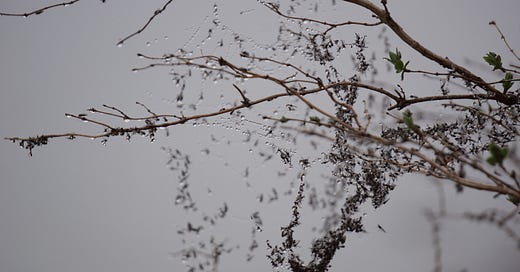



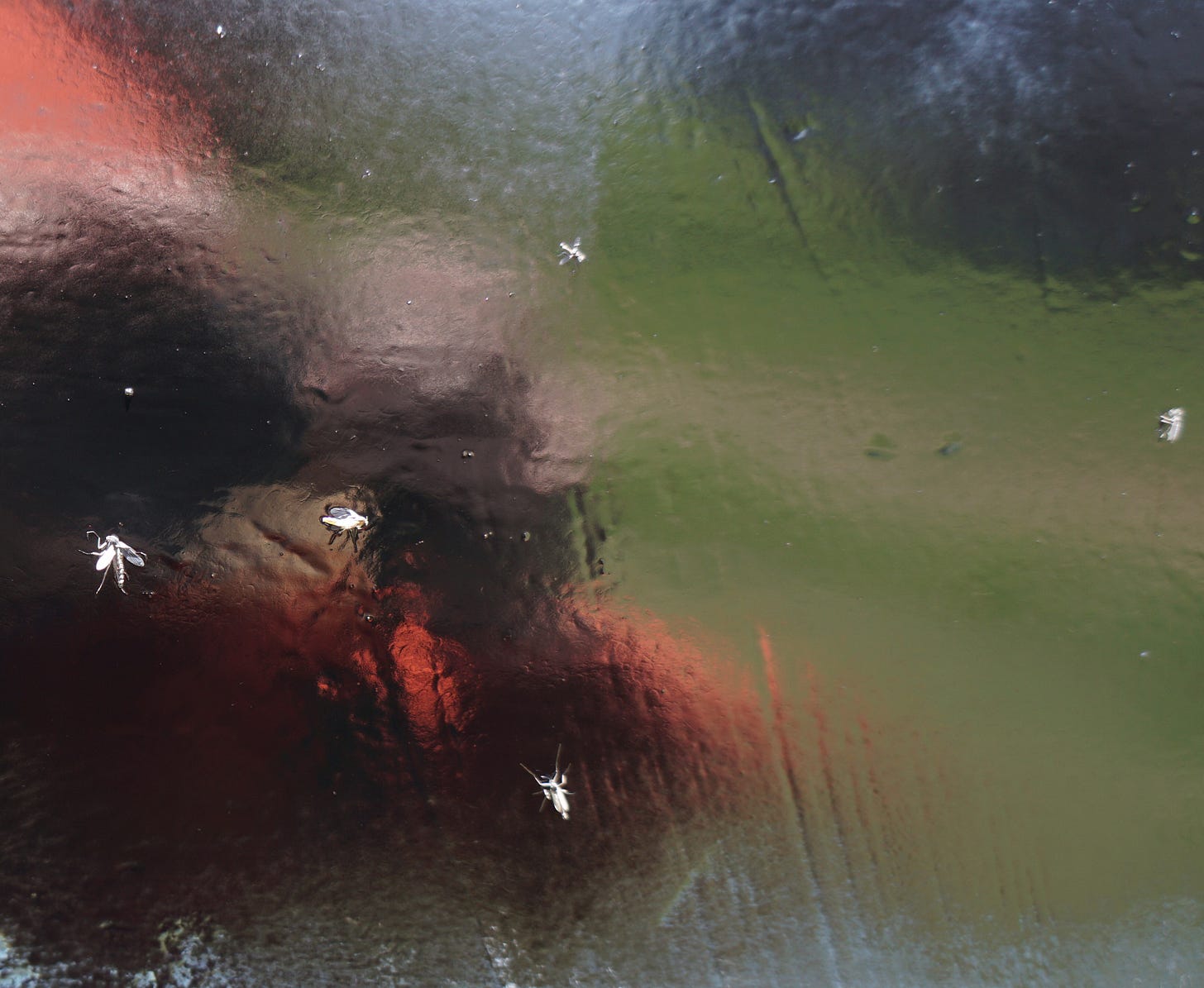
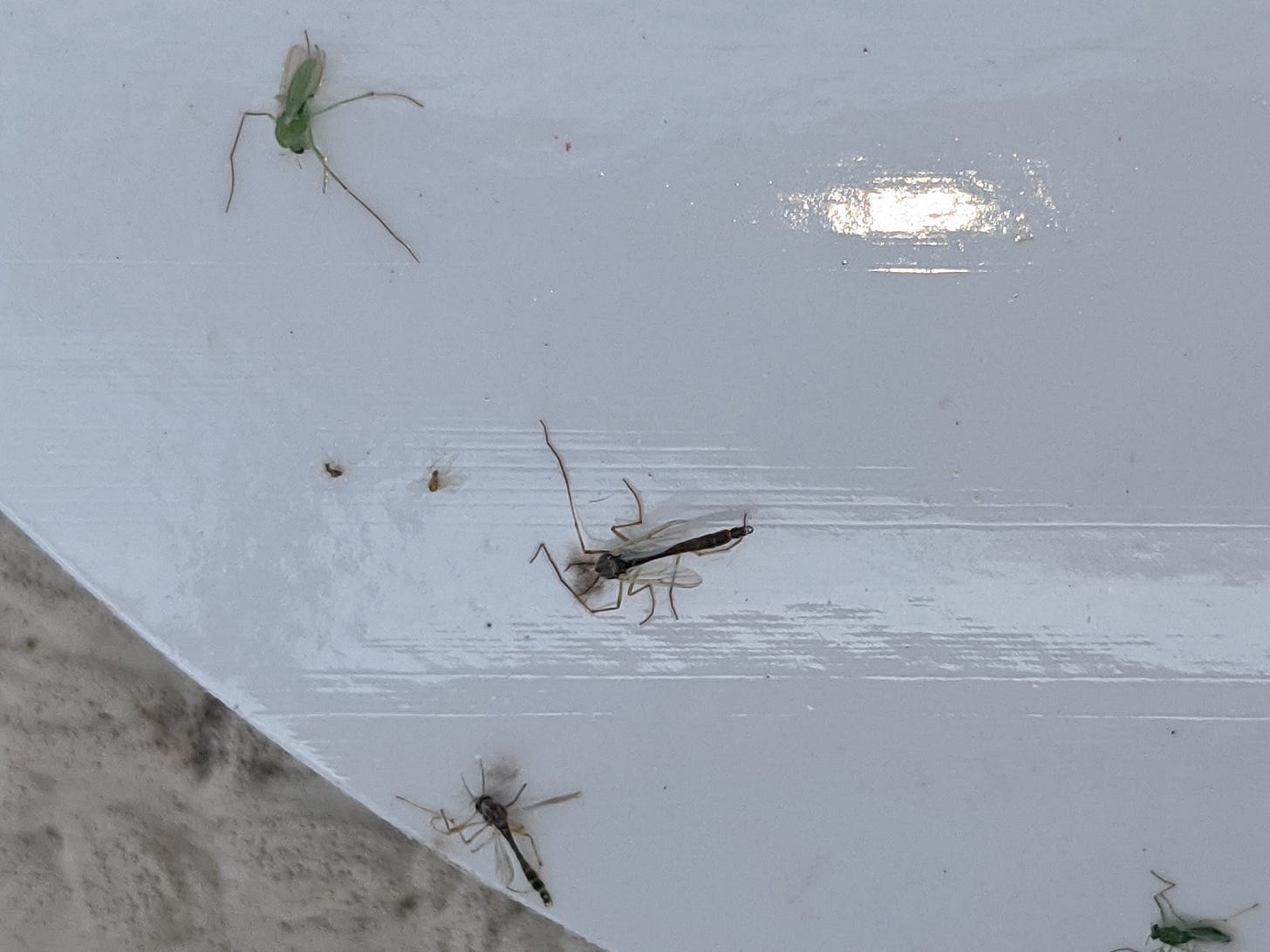
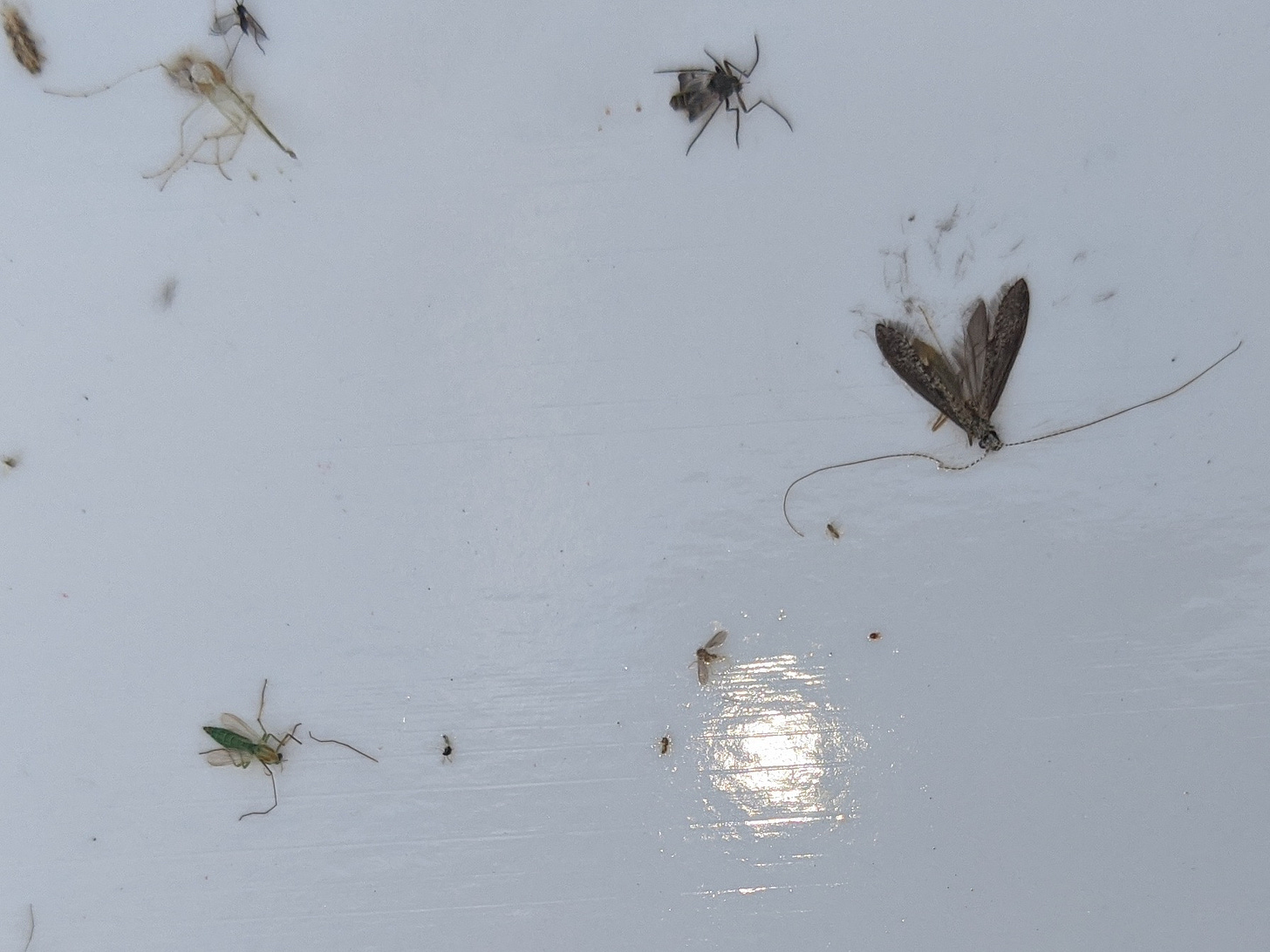
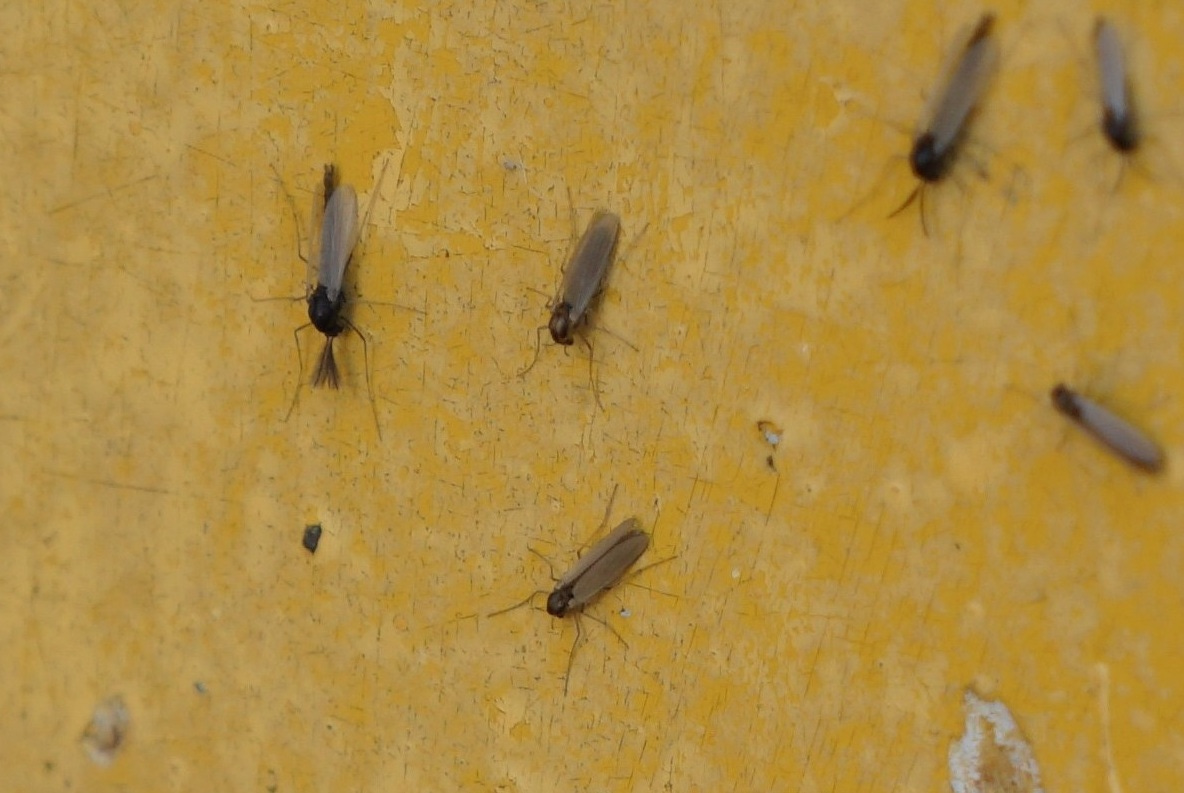
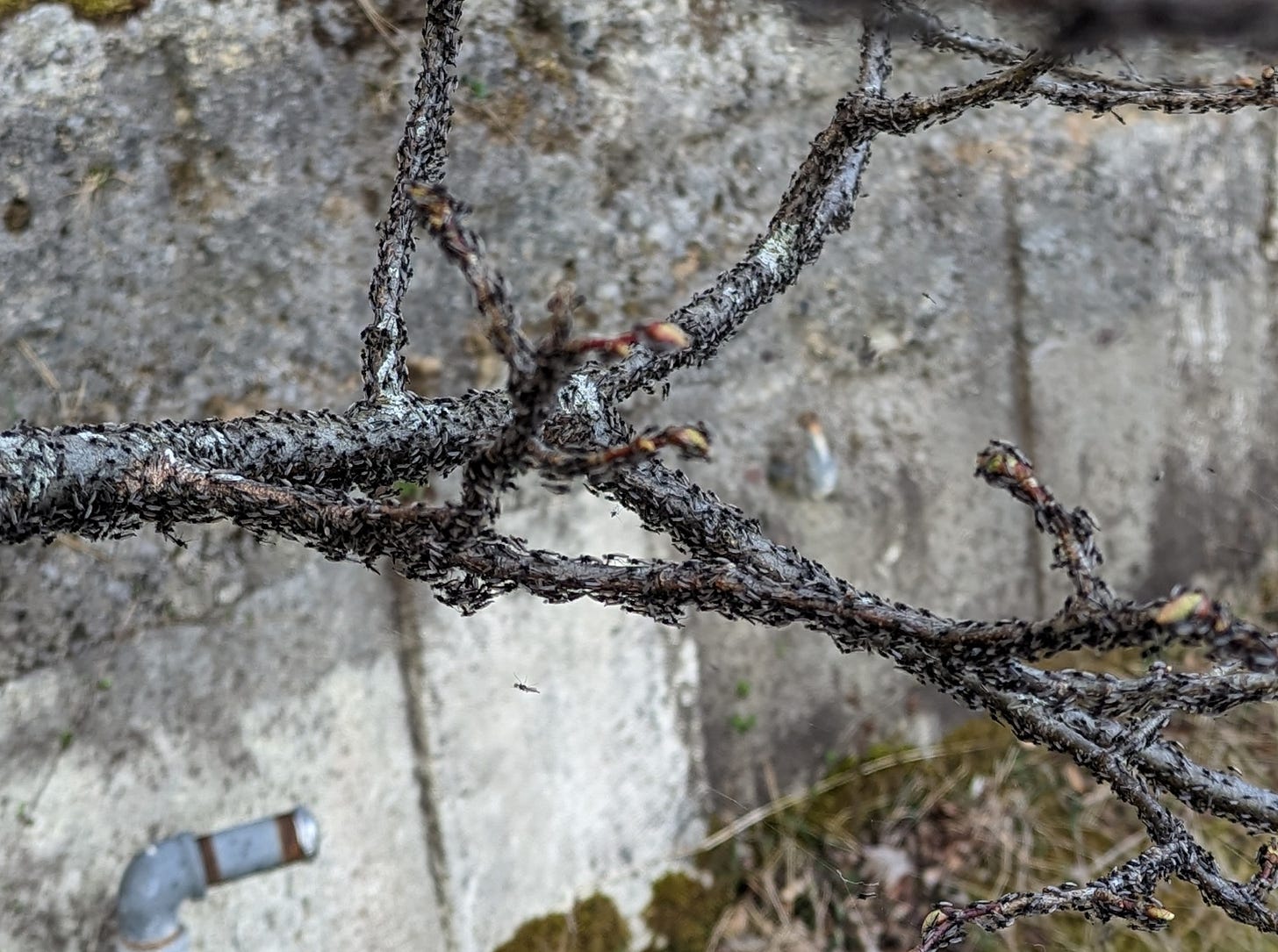
and when riding a bike shut your Mouth!
Fascinating post. Never knew about midges, except for shutting my eye as I walk through a swarm.